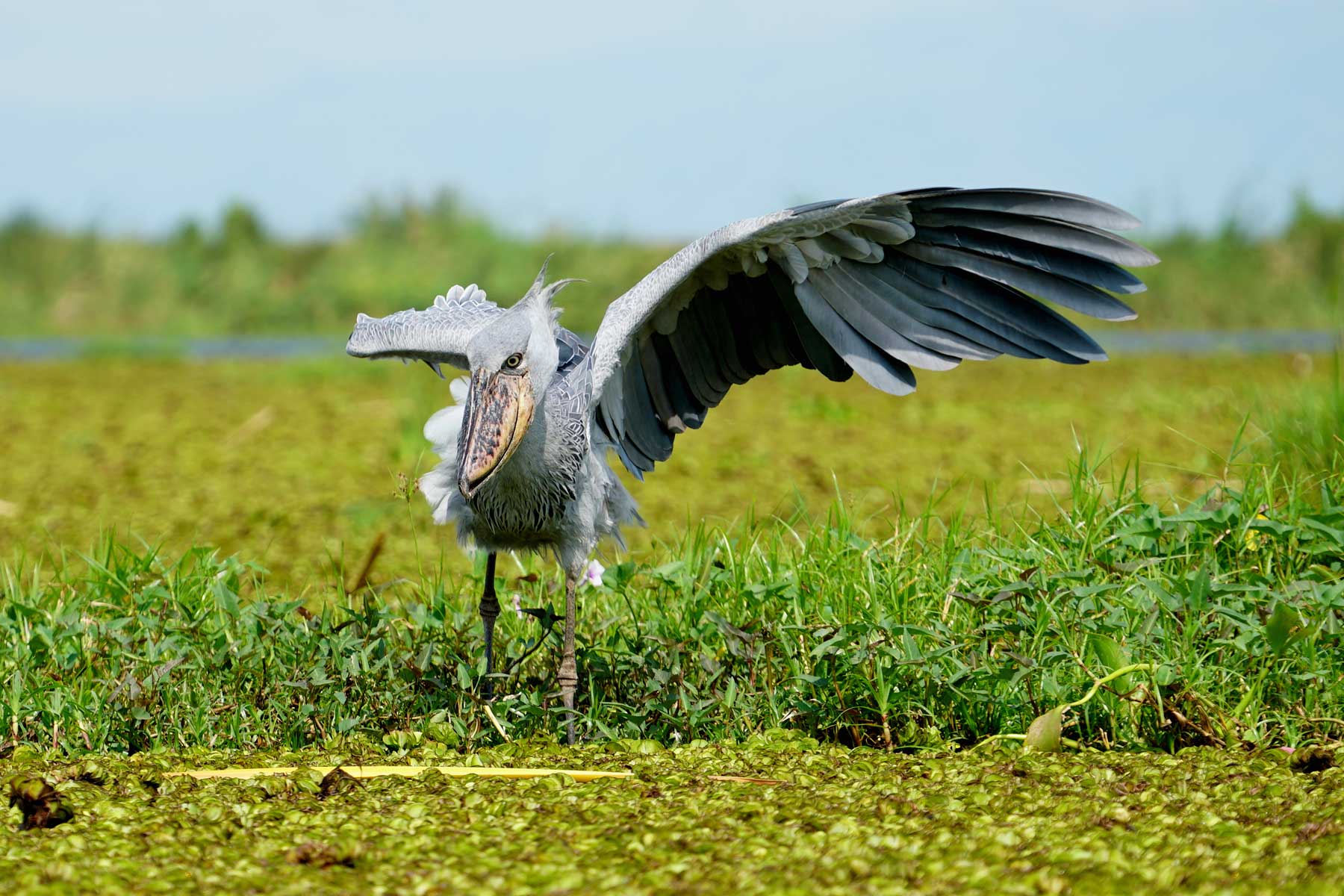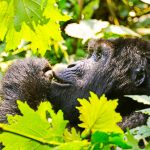“Unlock the Secrets of Mabamba Swamp: The Ultimate Shoebill Stork Encounter”
Embark on a captivating journey to Mabamba Swamp, a global hot spot for witnessing the mesmerizing shoebill stork in its natural habitat. At One More Adventure Safaris, we invite you to explore the intricate world of these solitary breeders and unveil the magic of shoebill sightings amidst the enchanting landscapes of Uganda.
Shoebill Storks: Solitary Marvels of Mabamba Swamp
- Territorial Behavior: Shoebill storks, captivating in their solitary nature, claim territories spanning about 3 square kilometers. Unlike many birds, they are never found in groups, showcasing a docile demeanor towards humans.
- Foraging Tactics: Shoebills typically forage alone, and it’s only during times of food scarcity that they might forage near each other. Breeding pairs often display a unique behavior, with the male and female foraging on opposite sides of their territory.
- Gular-Fluttering: To regulate body temperature and keep cool, adult shoebill storks engage in gular-fluttering, a distinctive behavior observed during foraging and rest.
Flight and Seasonal Movements
- Non-Migratory Habits: Shoebill storks are non-migratory as long as favorable foraging conditions persist. However, in certain regions, they make seasonal movements between nesting and feeding zones.
- Graceful Soaring: Observers may catch the majestic sight of shoebill storks soaring on thermals above their territories during the day. In flight, their necks are gracefully retracted.
Optimal Viewing Times: Breeding Season Delight
- Dry Season Magic: The best time to witness shoebills in all their glory is during the dry season, coinciding with their breeding period. This magical time unfolds from May to June and again from November to February.
- Territorial Defense: During the breeding season, shoebills become highly territorial, fiercely defending their nests against predators and competitors.
Breeding Rituals and Spectacle
- Nest Building: An intriguing aspect of shoebill breeding is nest building, involving trampling and clearing an area with a 3-meter diameter.
- Incubation and Fledging: The reproductive cycle spans 6 to 7 months, with an incubation period of approximately 30 days. Feathers fully develop at around 60 days, and fledging occurs at 95 days. Young shoebills take their first flights at 105 to 112 days.
- Parental Care: Parents continue to feed the young for about a month after fledging. Subsequently, young shoebills become entirely independent.
Your Shoebill Excursion with One More Adventure Safaris
The entire breeding season offers an exceptional opportunity to spot these magnificent creatures during your shoebill excursion with One More Adventure Safaris. Connect with our dedicated team, and let us craft a tailor-made shoebill excursion tour to Mabamba Swamp and Makanaga Swamp. Immerse yourself in the awe-inspiring world of shoebills, where each moment unfolds as a unique spectacle of nature’s wonders.





















